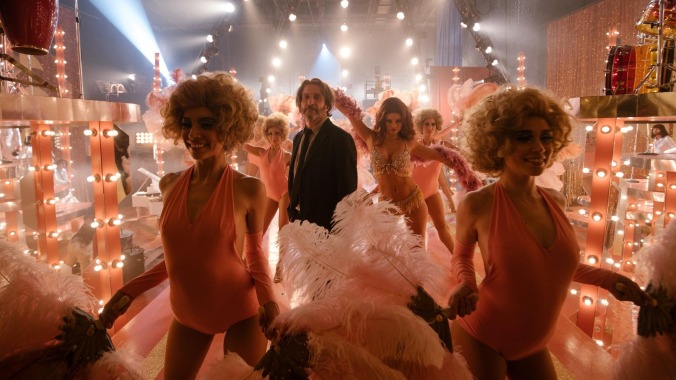In Bardo, False Chronicle Of A Handful Of Truths, Alejandro G. Iñárritu blurs fantasy and reality
The Mexican filmmaker's thinly fictionalized odyssey follows an uneven, sometimes self-indulgent path

They say write what you know, and filmmakers have been mining their personal lives for inspiration since the start of the art form. Alejandro G. Iñárritu is the latest to craft a thinly fictionalized film from his own life and experiences with Bardo, False Chronicle Of A Handful Of Truths. Are such autofiction narratives merely a trend, or have they become a genre into themselves? How do you distinguish one amongst this plethora of films?
For Iñárritu’s Bardo, we can start by recognizing it as an absurd comedy, with allusions to Federico Fellini’s 8½. Instead of a film director, the stand-in for Iñárritu is Silverio Gama (Daniel Giménez Cacho), a world-renowned journalist and documentarian going through a rather intense midlife crisis. After spending the last two decades away from his native Mexico, he’s back to receive a prestigious award, to reconnect with family and friends, and of course to examine why he left (and what he lost) by leaving. In tow comes his wife Lucía (Griselda Siciliani), his twentysomething daughter Camila (Ximena Lamadrid) and teenage son Lorenzo (Íker Sánchez Solano), each grappling with their own crises. Lucía, like Silverio, is still mourning their son who died as an infant. Camila and Lorenzo, also like their dad, are feeling the push-pull of old country vs. new country after growing up in America, and losing a sense of belonging to Mexico.
Iñárritu throws a lot at the audience. This is a movie that imagines a world in which Amazon bought the Mexican state of Baja. A world that imagines people dropping to the ground as they are walking from the weight of history and politics. It’s a world where sometimes our hero glides through Mexico City and at other times flies through the desert. He’s at the Mexican-American border in scenes that have a documentary feel as Silverio records the testimony of immigrants crossing. Yet somehow suddenly this seemingly real world disappears and we are in a fantastical yarn about religious saints protecting the same immigrants. Some characters speak without moving their lips in a jarring visual stunt that’s supposed to say something about their ability to communicate. In Bardo everyone is a fabulous dancer and a verbose orator. Characters yell at each other delivering long monologues that act as theses on life. Historical battles are recreated, and fanciful theoretical fights are won and lost. Bardo demands that we go along with all these flights of fantasy and imagination. It’s a lot, and it’s exhausting. Yet at times invigorating.
The film first comes alive when Silverio visits a soundstage to record a TV interview. As Darius Khondji’s camera follows Giménez Cacho, we discover all that concerns him, stunningly rendered in monitors that fill the set. These long roving tracking shots are repeated multiple times to showcase Silverio’s innermost thoughts. And it’s in those times that Iñárritu’s vision comes into sharp focus and the audience is both entertained and moved. In those instances Bardo becomes something special, even necessary. In conversations with his wife and his parents as he roams houses, deserts, and cities, Iñárritu is able to render a whole life in a few arresting displays.








































